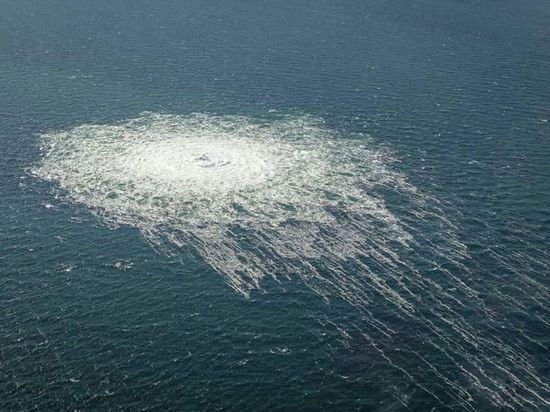The expert estimated how much the loss of Nord Streams will cost Russia
[ad_1]

The damage to the Russian Nord Stream gas pipeline system made us think about how much hydrocarbon supplies from our country are needed by European consumers. Until the last moment, the countries of the Old World claimed that they could easily get rid of the Russian fuel yoke through alternative supplies of raw materials. Will such forecasts come true, Igor Yushkov, an expert at the Financial University under the Government of the Russian Federation and the National Energy Security Fund, told MK.
– As a result of the destruction, the Nord Stream gas pipeline was stopped for a long time – the start of its operation, at best, was postponed by several months. Is it possible to predict when the gas pipeline will be fully operational again?
– At present, few people understand what is happening with the Russian export system Nord Stream. Let me remind you that even before the destruction, one of the branches of this highway could not be operated due to the lack of gas processing turbines, and the second line did not work due to Western sanctions. Now, I think that only the preparation for the repair will take up to six months. It will be necessary to conduct a damage survey, assess the scale of the accident, develop a troubleshooting plan, purchase equipment, select special vessels … Before spring, it will be unrealistic to start repair work directly.
– And what happens to the destroyed gas pipelines now? According to reports, the buffer gas in these pipes continues to leak. When will this end and what losses will Russia face?
– Indeed, apparently, the gas in the export pipes continues to leak into the air. In a few days, the nightmarish footage of carbohydrates being released onto the sea surface, now published by foreign media, will stop – certain technological parameters must be observed in order to start repairing pipelines. One of them, in all likelihood, is the complete absence of gas in the pipeline. Therefore, Gazprom is trying to agree on additional time for diagnosing damage. The volume of process gas injected into the Nord Stream system was about 100 million cubic meters. By selling this fuel to Europe, the Russian monopoly could earn up to $2 billion.
– What specific work will have to be carried out to restore Nord Stream?
– Assessing damage to the pipeline system will require work directly at the site of destruction. To do this, you will need to connect special deep-sea vehicles to work. Russia has the technological resources to carry out repairs. As the practice of laying Nord Stream 2 during the period of sanctions has shown, the Fortuna barge and the Akademik Chersky pipelayer have the ability to implement such complex underwater operations. If the efforts of these courts are enough to eliminate the consequences of the destruction, then Gazprom will not have to look again for construction contractors from abroad on the international market.
– What if it’s not enough?
– At the moment, only one thing is obvious: the complexity of the repair process will be comparable to the efforts hidden in the construction of the gas pipeline. After the gas remaining in the Nord Streams disappears, the European co-owners of these pipes will begin to indicate the possibility of collecting additional penalties from Russia.
– And what can be their size?
– The account will first go to tens, if not hundreds of millions. Believe me, the work of specialists who rely on long-term maintenance of Russian gas pipes in Europe is evaluated by continental officials in a separate order. Although there is no talk of raising contractual agreements yet. There are amounts indicated by insurance agreements, reaching 17 billion euros (the cost of laying Nord Stream-2 did not exceed $10 billion). However, the payment of this compensation is likely to be decided after numerous meetings of European arbitration courts. The verdict, as follows from recent practices, is likely to be issued not in favor of the Russian side.
Let’s get back to technical issues. What exactly is to be done by the repair ships that went to restore the Russian pipeline to the Baltic Sea?
– Let us emphasize that it is not known exactly who goes to the aid of Nord Stream: so far, observers are talking about the presence of European and American ships in the area of the incident. But even if these ships turn out to be civilian, and not military, they will have to do difficult and painstaking work: they will have to submerge underwater units to the depth of the pipeline. Then assess the damage. Then you have to analyze the situation already on the shore. And only after that a plan will be developed directly to restore the damaged sections of the pipe.
– And what could be this plan?
– From the technological side, the actions of domestic repairmen can be quite diverse. After the last buffer gas comes out of the damaged pipes, filling the export system for technological reasons, Gazprom will face a choice: either partially freeze the pipelines that have been empty from gas injection, or continue to refuse to give consent to the supply of hydrocarbons through this system. Quite radical decisions can be made: for example, to prevent the flow of sea water into pipes when there is no natural gas left in them, the gas pipeline can be completely cut off from the main source of raw materials – Russian fields. Or, on the contrary, the pressure in the pipes must increase in order to push the salt mixtures out of the production lines. It remains only to understand who will pay for such work: Europe, seeking to say goodbye to Russian gas, or Russia, for which export energy revenues can again become the main component of budget revenues.
[ad_2]
Source link






